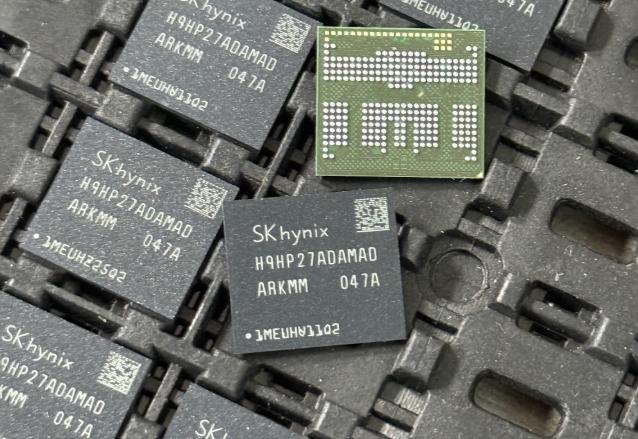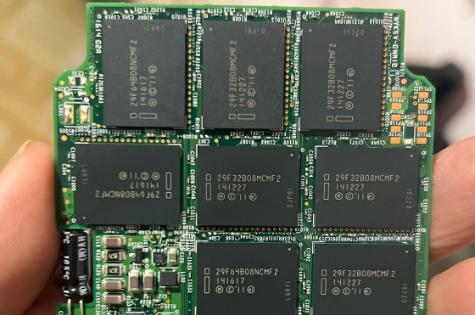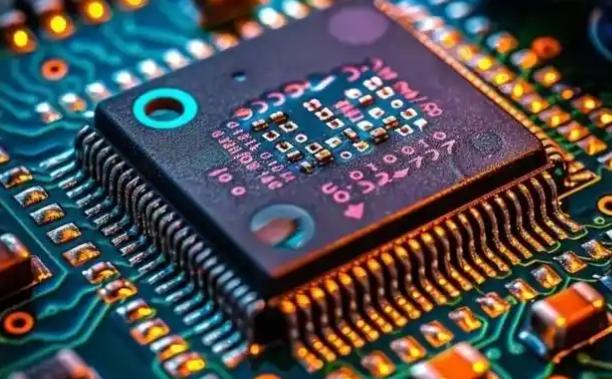Hello! now About Us
Crystal Oscillator CS31-32.768K-12.5-TR: The Precision Timing Core of Electronic Devices
7/23/2025 2:28:33 AM
On the circuit boards of smartphones, smartwatches, smart home devices, and even industrial control systems, a miniature component measuring just 3.2×1.5 mm-the CS31-32.768K-12.5-TR crystal oscillator-is vibrating precisely 32,768 times per second, providing a critical time reference for the entire system. This surface-mount tuning fork crystal resonator from Transko has become the core element for achieving accurate timing in modern electronic devices, thanks to its unique physical characteristics and precision manufacturing processes.
I. The Mathematical Elegance of Frequency Design: The Law of 2¹⁵
The 32.768 kHz oscillation frequency of the CS31-32.768K-12.5-TR is no coincidence. This value exactly equals 2¹⁵ (32,768 = 2¹⁵), enabling circuit designers to convert the original oscillation signal into a precise 1 Hz second pulse through 15 stages of frequency division by 2. This perfect mathematical alignment eliminates the need for complex frequency division circuits that would otherwise be required for non-power-of-two frequencies, significantly enhancing the reliability and cost-effectiveness of timing systems.
Take quartz clocks as an example. Their internal clock modules generate a 32.768 kHz reference signal using the CS31 crystal oscillator, which is then divided by 15 stages to produce a 1 Hz second signal that drives the hands or digital display for accurate timekeeping. This design is equally critical in smartphones, where the real-time clock (RTC) module relies on the crystal oscillator to maintain system time, ensuring that functions like alarms and calendars remain accurate even when the device is powered off and running on a backup battery.
II. Tuning Fork Structure: The Perfect Conversion Between Mechanical Vibration and Electrical Signals
The CS31-32.768K-12.5-TR employs a tuning fork crystal structure, with its core consisting of a precisely cut quartz crystal wafer. When an alternating voltage is applied by an external circuit, the wafer generates mechanical vibrations, which in turn produce electrical signals through the piezoelectric effect, creating a self-sustaining oscillation. The equivalent circuit model of a quartz crystal reveals its operating principle: a series RLC circuit (composed of inductance Ls, capacitance Cs, and resistance Rs) in parallel with a capacitance Cp forms a resonant system that generates a stable oscillation frequency band between the series resonant frequency (ƒs) and parallel resonant frequency (ƒp).
Transko utilizes vacuum annealing technology to thermally treat the crystal wafer, eliminating internal stresses and surface defects introduced during processing. This results in an exceptional frequency-temperature characteristic of -0.034 ppm/℃ for the crystal oscillator. This means that within the operating temperature range of -40℃ to 85℃, the frequency deviation of the CS31 crystal oscillator does not exceed ±20 ppm (equivalent to a daily error of no more than 1.7 seconds), fully meeting the stringent long-term stability requirements of consumer electronics devices.
III. Miniaturization and High Reliability: The Ideal Choice for Modern Electronic Devices
The 3.2×1.5 mm SMD package size of the CS31-32.768K-12.5-TR allows for easy integration into compact devices such as smartphones and smartwatches. Its 12.5 pF load capacitance design enables direct matching with most integrated circuits (ICs) without the need for additional circuit parameter adjustments. In terms of manufacturing processes, the crystal oscillator adopts ceramic packaging and metal plating technologies, ensuring stable electrical performance within a storage temperature range of -55℃ to 125℃ while providing resistance to shock and vibration, capable of withstanding a 1.5-meter drop test without damage.
In practical applications, the CS31 crystal oscillator boasts an equivalent series resistance (ESR) as low as 50 kΩ, significantly reducing the power consumption of the oscillation circuit. For instance, in a certain brand of smartwatch, the adoption of the CS31 crystal oscillator in its RTC module reduced the standby current from 1.2 μA to 0.8 μA, extending battery life by 20%. Additionally, the first-year frequency aging rate of the crystal oscillator is controlled within ±3 ppm, meaning that the cumulative time error of a device using it would not exceed 26 seconds after five years of operation, far surpassing the traditional ±100 ppm/year standard for crystal oscillators.
IV. Application Scenarios: Full-Sector Coverage from Consumer Electronics to Industrial Control
The application range of the CS31-32.768K-12.5-TR extends far beyond consumer electronics. In industrial automation systems, the crystal oscillator provides a precise time reference for programmable logic controllers (PLCs), ensuring accurate synchronization of equipment operation and fault diagnosis. In the automotive electronics sector, its extended temperature range of -40℃ to 105℃ meets the stringent environmental requirements of in-vehicle navigation and tire pressure monitoring systems. In medical devices, the long-term stability of the CS31 crystal oscillator ensures the precise timing of data acquisition in electrocardiogram machines and blood glucose meters, preventing diagnostic errors caused by time inaccuracies.
Taking the Global Positioning System (GPS) as an example, the satellite signal reception module relies on the CS31 crystal oscillator to maintain synchronization with satellite clocks, with time accuracy directly impacting positioning errors. Experimental data shows that a GPS module using this crystal oscillator reduced horizontal positioning errors from ±5 meters to ±2 meters in dynamic positioning tests, significantly enhancing the reliability of navigation systems.
V. Technological Evolution: From Mechanical Clocks to the Quantum Era of Timing Innovation
The emergence of the CS31-32.768K-12.5-TR marks the transition of crystal oscillator technology from traditional mechanical clocks to modern electronic devices. In the 1980s, Japanese companies pioneered the application of 32.768 kHz crystal oscillators in electronic watches, driving the miniaturization revolution in timing technology. Today, with the rapid development of 5G, the Internet of Things (IoT), and artificial intelligence (AI), higher demands are being placed on the frequency accuracy, power consumption, and integration of crystal oscillators.
Transko has introduced next-generation crystal oscillator products based on MEMS (Micro-Electro-Mechanical Systems) processes, reducing the crystal wafer size to 1.0×0.8 mm through photolithography technology while improving the frequency-temperature characteristic to ±0.01 ppm/℃. These innovations not only continue the core advantages of the CS31 series-precision, reliability, and compactness-but also open up new possibilities for time synchronization, sensor fusion, and low-power design in future smart devices.
Conclusion
From smartphones to satellite navigation, from industrial control to medical diagnostics, the CS31-32.768K-12.5-TR crystal oscillator carries the "time lifeline" of modern electronic systems within its tiny frame. Behind it lies the ingenious utilization of quartz crystal physical properties, the perfect application of mathematical frequency division principles, and the continuous breakthroughs in semiconductor manufacturing processes. In the foreseeable future, this miniature timing core will continue to evolve, providing a solid time reference for humanity to build a more precise and intelligent digital world.
Fudong Communication (Shenzhen) Group Co., Ltd., established in 2004, is a specialized global first tier semiconductor agent/distributor.
Fudong Mall is an online e-commerce platform belonging to Fudong Communication (Shenzhen) Group Co., Ltd. Fudong collaborates with global electronic component distributors and Chinese spot inventory suppliers.









